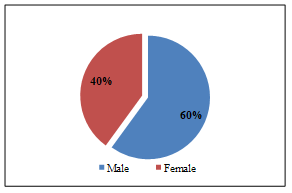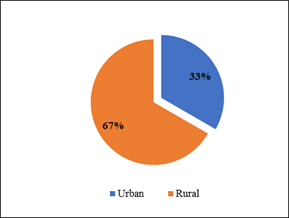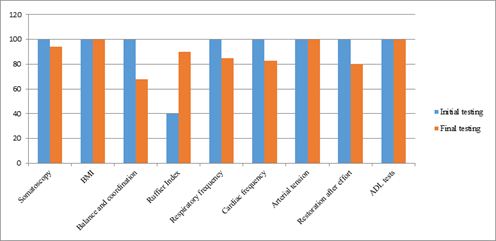Abstract
Children with intellectual disabilities are deprived of the early childhood psychological endowment and therefore require that, through a systematic education, to resume and complete the acquisition of the psychomotor skills. Our study approaches the development and implementation, in the context of the inclusive education system, of a series of multimedia activities, which is oriented towards the development of the autonomy and personal independence, creativity and imagination, self-confidence, communication skills and social interaction as an alternative form of education and development in different aspects (physical, mental and social). The pilot study was conducted with a group of 15 pupils aged between 11-14 years old, integrated in the special educational system. The children come from different social backgrounds and therefore they are easily exposed to social exclusion, to bullying or to poor participation in urban social life. Evaluation methods and techniques (balance and coordination tests, cardiorespiratory functional tests and ADL screening tests) were used to determine the functional capacity of the children, their skills and limitations. In term of results, we observed the development of the autonomy and personal independence, creativity and imagination, a greater self-confidence and capacity of social interaction and improved communication skills of the children with special educational needs. In conclusion, video exercises contribute not only to the development of the functional and motor skills, but also to the recognition and acceptance of the unique characteristics of every individual and therefore, to the exploitation of new and innovative resources, in order to achieve the true potential of these children.
Keywords: Video exercisessocial inclusionspecial educational
Introduction
Growth and development are alternating physiological processes ending on average at 21-23 years old with individual variations. During the stages of growth and development unpredictable elements may occur that would lead to the alteration of the balance between these two fundamental processes, which then requires intervention of the specialists in order to correct and direct the evolution of these phenomena.
Children have a great capacity for adaptation and recovery when they benefit from a close and continuous guidance and supervision.
The integration approach of children with intellectual disabilities at school level requires compliance with the norms of physical growth and development, periodic evaluation and correction of emerging or pre-existing imbalances (González-Gil et al., 2013; Odom, Buysse, & Soukakou, 2011).
The factors that are associated with these criteria are: gender, development of practical skills, level of understanding, level of training, affiliation to a social, familial, school environment as well as the individual capability of awareness, involvement or active participation (WHO, 2011).
Problem Statement
When talking about the integration of children with intellectual disabilities in the school mass system, there are some general norms to take into consideration and which refers to: correct identification of the degree of deficiency, establishing the criteria for inclusion according to physical development assessment, psychological development and intelligence quotient, motor skills and functional capacity (Iconaru & Ciucurel, 2014; Mura et al., 2015).
The objectives of our applied program were directed towards stimulating an adaptive response of children’s functional behaviour to physical activity, with extended benefits on socialization, integration and school achievements, as previous studies have demonstrated a positive association of participation in physical activities and improvements in different areas of functional capacity in children with disabilities (Ciucurel & Iconaru, 2012; Donnelly et al., 2016; González et al., 2016).
The intervention program design followed the general principles of physical therapy which are: do not cause pain, do not generate harm, respect the intensity of effort, adapt the content of the program to the child’s possibilities and continue to apply the program until the improvement of the health status has occurred.
Research Questions
The establishment of the inclusion criteria in the research took into consideration obtaining the agreement from both the school staff and physical therapists who worked with children, the free consent of the children’s family and, at the same importance, the child’s willingness to participate in this project.
Occupational balance has a huge impact on school performance of children (Dobins et al., 2013; Raveica, Raveica, & Ciucurel, 2012).
The practical approach was based on a pilot study demonstrating the strong link between the school performance of the children and application of physical exercises and therapeutic programs, combined with music and practical demonstrations (Srikanth, Petrie, Greenleaf, & Martin, 2015; HOPSports, 2014).
Purpose of the Study
The purpose of our study was to design an interactive kinetic and therapeutic intervention program using multimedia support, in order to preserve and improve the individual functional level and health status of participants and to increase the level of social and/or familial integration of children with mild mental deficiencies.
Research Methods
We conducted a prospective experimental study with pre- and post-test on a typical group of school age children with intellectual disabilities. The study sample consisted of 15 children with mild and medium intellectual disability and age between 10-14 years old. There were nine boys and six girls, from both urban and rural environment. To develop our investigation we used mixed qualitative and quantitative research methods and paired t-Test to analyse the statistical significance of our research variables.
The kinetic programs aim to increase the children’s ability to concentrate and to consolidate the functional and neuro-motor skills performance by imitating a set of illustrated movements with musical support and, in the same time, to the improve and develop their memory capacity by repeating the set of proposed exercises program.
In this context, improving intellectual capacity by stimulating neurogenesis processes and increasing the concentrations of local neurotrophic factors could lead to increased emotions and reduction of anxiety.
Findings
This research was designed for children with mental disorders using adequate methods to stimulate participation and active implication using challenging technological support. The program was applied during five minutes, at a low degree of difficulty for physical exercises with a medium to high average intensity, an average number of five sessions per day and most of them were done during the school program breaks in the classrooms or in the physical therapy hall. The required materials and means to achieve the program included: adequate room space, screen / wall for video projection, speakers for the audio support, music support). All the children had adequate sports equipment in order to prevent eventual accidents. The recommendations for appropriate hydration, route explanation and demonstration, the prior warm-up of the children according to the norms of participation in physical exercise sessions, observance and supervising of breaks for functional recovery and rest between sessions have been respected.The assessment of the children included physical examination, evaluation tests (weight, height, body mass indexing, coordination tests and balance test -Romberg, modified Romberg), functional assessment tests (respiratory rate, heart rate, blood pressure, Ruffier Index), ADL tests. A total of six tests were conducted during 10 active participation sessions.
Regarding the sociodemographic characteristics of our study sample, from the 15 subjects, nine were boys (60%) and six were girls (40%) (figure

Also, the children had different social backgrounds and therefore they were easily exposed to social exclusion, to bullying or to poor participation in urban social life. In a greater proportion (67%) they were from rural environment, while only one third (33%) came from urban area (figure

In terms of results, we observed the development of the autonomy and personal independence, creativity and imagination, a greater self-confidence and capacity of social interaction and improved communication skills of the children with special educational needs
The analysis and interpretation of the data gathered during the research are presented as follows.
The physical examination has shown an improvement in the overall posture of the body for the majority of the children.
Also, the results of the balance and coordination tests have improved significantly (p<0.01), instead the BMI did not change significantly.
The Ruffier index had a positive evolution (from a poor effort adaptation to a moderate effort adaptation). The initial respiratory frequency, even at rest, was higher due to a high level of anxiety and emotion, this being interpreted as a reaction to new and unknown situation; after effort, it was recorded an average decrease of 15%.
The resting heart rate had a parallel evolution with respiratory rate, recording an average decrease of 17% at the end of the intervention.
The systolic and diastolic blood pressure did not change significantly (diastolic blood pressure increase or decrease with 10 mmHg, the systolic blood pressure and the differential blood pressure did not change). In terms of post-effort functional recovery of the body we registered an improvement on average by 20%.
From the analyses of the ADL tests results we have found variations within normal limits.

The appreciation of the satisfaction regarding the program results, the willingness of the children to participate in this program, the excitement for the program to start, the degree of socialization and integration into the community/group were all appreciated by applying a questionnaire. The questionnaire had 10 easy-to-navigate and response items, with a report of responses quantified in a minimum and respectively maximum score (figure
Conclusion
Participation in the kinetic program with the proposed multimedia support was followed by stimulation of the functional capacity and many other improvements, increased confidence and self-esteem and increased degree of autonomy. The program can be systematized, valued, adapted and individualized according to the level of the subjects’ dysfunction.
The kinetic program was applied for a pilot study, the results being used for the adaptation, correction and extension of a new experimental scientific research.
In conclusion, our promoted video exercises will contribute not only to the development of the functional and motor skills, but also to the recognition and acceptance of the unique characteristics of every individual and therefore, to the valorisation of new and innovative resources, in order to achieve the true potential of these children.
The results are part of a pilot study and they will be used as a base for a larger study.
References
- Ciucurel, C. & Iconaru, E. I. (2012). Occupational therapy for children with Down syndrome; a case study. Procedia-Social and Behavioral Sciences, 46, 3825-3829. doi.org/10.1016/j.sbspro.2012.06.154.
- Dobbins, M., Husson, H., Decorby, K., and Larocca, R. L. (2013). School-based physical activity programs for promoting physical activity and fitness in children and adolescents aged 6 to 18. Cochrane Database Systematic Reviews, (2):CD007651. doi:
- Donnelly, J. E., Hillman, C. H., Castelli, D., Etnier, J. L., Lee, S., Tomporowski, P., …Szabo-Reed, A. N. (2016). Physical activity, fitness, cognitive function, and academic achievement in children: a systematic review. Medicine & Science in Sports & Exercise, 48(6), 1197-1222. doi: 10.1249/MSS.0000000000000966.
- González, C. S., Gómez, N., Navarro, V., Cairós, M., Quirce, C., Toledo, P., & Marrero-Gordillo, N. (2016). Learning healthy lifestyles through active video games, motor games and the gamification of educational activities. Computers in Human Behavior, 55, 529-551. doi.org/10.1016/j.chb.2015.08.052.
- González-Gil, F., Martín-Pastor, E., Flores, N., Jenaro, C., Poy, R., & Gómez-Vela, M. (2013). Teaching, learning and inclusive education: the challenge of teachers’ training for inclusion. Procedia - Social and Behavioral Sciences, 93, 783-788. doi.org/
- HOPSports. (2014). Interactive Youth Physical Education Training System. Retrieved from: http://www.hopsports.com.
- Iconaru, E. I. & Ciucurel, C. (2014). Developing social and civic competencies in people with intellectual disabilities from a family center through an adapted training module. Procedia-Social and Behavioral Sciences Journal, 116, 3303–3307. doi.org/
- Mura, G., Rocha, N. B., Helmich, I., Budde, H., Machado, S., Wegner, M.,…Carta, M. G. (2015). Physical activity interventions in schools for improving lifestyle in European countries. Clinical practice and epidemiology in mental health, 11(Suppl 1 M5), 77-101. doi:
- Odom, S. L., Buysse, V., & Soukakou, E. (2011). Inclusion for young children with disabilities: A quarter century of research perspectives. Journal of Early Intervention, 33( 4), 344-356.
- Raveica, G., Raveica, I. C. & Ciucurel, M. (2012). Occupational Balance in Children of 8-10 Years and its Influence on School Performance. Procedia-Social and Behavioral Sciences, 46, 3752-3756. doi.org/
- Srikanth, S., Petrie, T. A., Greenleaf, C., & Martin, S. B. (2015). The relationship of physical fitness, self-beliefs, and social support to the academic performance of middle school boys and girls. The Journal of Early Adolescence, 35 (3), 353 – 377.
- WHO. (2011). World Report on Disability. World Health Organisation. Retrieved from https://www.who.int/disabilities/world_report/2011/report/en/
Copyright information

This work is licensed under a Creative Commons Attribution-NonCommercial-NoDerivatives 4.0 International License.
About this article
Publication Date
15 August 2019
Article Doi
eBook ISBN
978-1-80296-066-2
Publisher
Future Academy
Volume
67
Print ISBN (optional)
-
Edition Number
1st Edition
Pages
1-2235
Subjects
Educational strategies,teacher education, educational policy, organization of education, management of education, teacher training
Cite this article as:
Ionut*, S. G., & Georgescu, L. (2019). Impact Of Video Exercises On Health, Well-Being And Social Inclusion. In E. Soare, & C. Langa (Eds.), Education Facing Contemporary World Issues, vol 67. European Proceedings of Social and Behavioural Sciences (pp. 1125-1130). Future Academy. https://doi.org/10.15405/epsbs.2019.08.03.137
